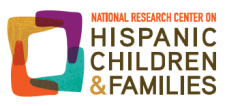
40 YEARS OF EXPERTISE
evaluating the quality and impact of early care and education.
BACKGROUND
What is Early Care
and Education (ECE)?
What purpose do ECE
programs serve?
What types of ECE
programs are there?
What is the
Achievement Gap?
How Do We Close the Achievement Gap?
Access to High Quality Early Care and Education.
Erin Bumgarner-Harris, Associate Scientist, Social and Economic Policy Division
ABT'S IMPACT
ACCESS
QUALITY
Access to ECE depends on many factors: availability, affordability, geographical location, parents' work scheduling needs, and parents' knowledge about ECE programs.
Access in Underserved Communities
The Massachusetts' Preschool Expansion (PEG) Grant is a federal grant that is expanding high-quality ECE to over 800 four-year-olds per year in five low-income communities.
As part of a four-year study, we are evaluating whether this initiative is meeting its goal. Early findings indicate that PEG has achieved its goal, and is providing the first formal early education experience for most participating children. At the end of preschool, PEG children scored near age expectation in their early literacy and early math skills. Only about 12 percent of children were substantially below age expectation.
Is the Massachusetts Preschool Expansion Grant increasing access to high quality ECE? Is it improving children's outcomes?
Access for Culturally and Linguistically Diverse Families
We are co-leading The National Research Center on Hispanic Children & Families, a research center with a focus on improving the quality and accessibility of ECE services for low-income Hispanic families.
We published a resource guide to help community-based organizations reduce disparities in access to important social services such as ECE. This resource guide ranked as one of the most viewed products that the National Research Center on Hispanic Children & Families has released to date.


Are low-income Hispanic kids in Chicago enrolling in publicly funded ECE programs at rates similar to non-Hispanic kids?
In 2017, in partnership with Chapin Hall, we conducted a study examining the rates of participation of low-income Hispanic children in publicly funded ECE programs in Chicago.
We found higher than expected rates of ECE participation (more than 4 out of 5 low-income Hispanic kids are enrolled in some form of publicly funded ECE), and there weren't the typically observed disparities in ECE utilization rates, as compared to their non-Hispanic peers.
Access across States
We are working with Harvard University Graduate School of Education researchers to answer fundamental questions for Massachusetts such as: What are the patterns of ECE use across the state for three- and four-year-olds? What combinations of care (both center-based and in-home care) are families using for their preschool children?
This Early Learning Study at Harvard (ELS@H) will follow approximately 5,000 3- and 4-year-olds from across Massachusetts, with the goal of strengthening access to high quality care for young children in Massachusetts and beyond.
What type of ECE settings do 3- and 4-year-olds utilize in Massachusetts? How are the features of these settings related to children's outcomes?
High-quality ECE programs, defined primarily as stimulating and supportive interactions between adults and children, can narrow the achievement gap by helping vulnerable children to grow and learn.
Measuring ECE Quality
Measuring the quality of ECE is challenging. We have developed structured observation measurement systems that better assess the quality of teacher/provider-child interactions and resources and opportunities in ECE settings.
Innovative Structured Observation Measures

The Observation Measures of
Language and Literacy Instruction

The Quality of Early
Childhood Settings

The Cultural Items and
Language Use Checklist
These measures have been used in our ECE studies to document differences across children's experiences in different types of settings and to measure the effects of ECE interventions.
Studying Measures of Quality Across
120 classrooms
40 centers
2,000+ children and families
We are working with MDRC to conduct a large-scale study in 120 classrooms in 40 centers across three different states with over 2,000 children and families to focus on measurements of quality.
We are answering questions such as Which dimensions of quality are key? What thresholds of quality dimensions are necessary to support developmental gains? And, What are the barriers and drivers to successful implementation of ECE?
Quality of Instruction For Culturally and Linguistically Diverse Children
We are evaluating the Migrant and Seasonal Head Start (MSHS) program, which provides ECE services to more than 30,000 culturally and linguistically diverse young children of migrant farmworkers in 33 states across the country.
For this study we developed an observation tool known as the Cultural Items and Language Use Checklist (CILU). The research will help us better understand program, center, family and child characteristics – as well as MSHS services, practices, and quality.


Workforce Development and Coaching


More states and localities are looking for ways to increase availability and quality of ECE across different communities.
We are providing technical assistance to the Massachusetts Department of Early Education and Care to create and implement a more aligned and comprehensive statewide workforce development system. The focus of this work includes coaching supports for nearly 27,000 early educators who serve nearly 440,000 children in the Commonwealth.
Child-care Subsidy Strategies
We conducted a two-year randomized controlled trial (RCT) with a sample of 1,523 three-and-four-year olds served across 164 ECE centers across Miami-Dade County. We assessed whether introducing high-quality curricula into subsidized child care centers improved the language and early literacy outcomes.
Three different curricula were compared, and significant impacts were shown for two of the three. Findings showed that the combination of a targeted literacy curricula and bi-monthly mentoring supports for teachers could lead to positive language and literacy outcomes for low-income children served within subsidized ECE programs.
Did a high-quality early literacy-focused curriculum lead to positive outcomes in subsidized ECE programs?
Our deepest gratitude to our clients, funders and local partners, whose support and collaboration is critical in enabling us to achieve our mission.
- Administration for Children and Families, United States Department of Health and Human Services
- Massachusetts Department of Early Education and Care
- Harvard Graduate School of Education

- SOCIAL EQUITY & EMPOWERMENT
- EFFECTIVE GOVERNANCE
- THRIVING NATURAL ENVIRONMENT
- GOOD HEALTH
- ECONOMIC SECURITY
- Fighting Mosquito-borne Disease
- Responding to the Opioid Epidemic
- Empowering Women and Girls
- Closing the Achievement Gap
- Driving Sectoral Response to Climate Change
- Protecting Environmental and Human Health
- Strengthening Agricultural Markets for Economic Security
- Ending and Preventing Homelessness
- Strengthening Institutions for Effective Governance
- Our Employee Wellness
- Our Leaders at all Levels
- Our Environmental Responsibility
- Our Financial Health
- Our Ethics and Governance
- Our Communities